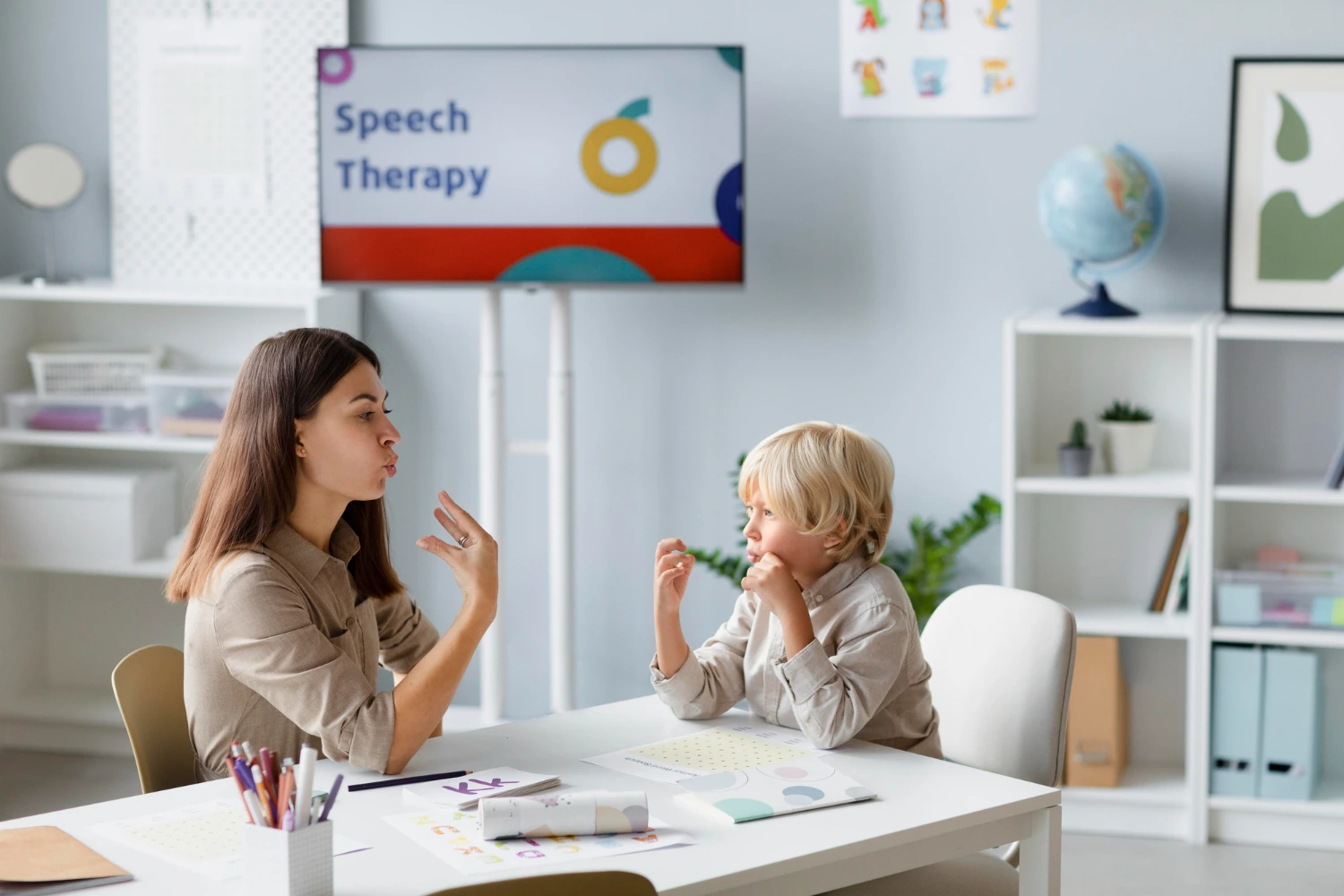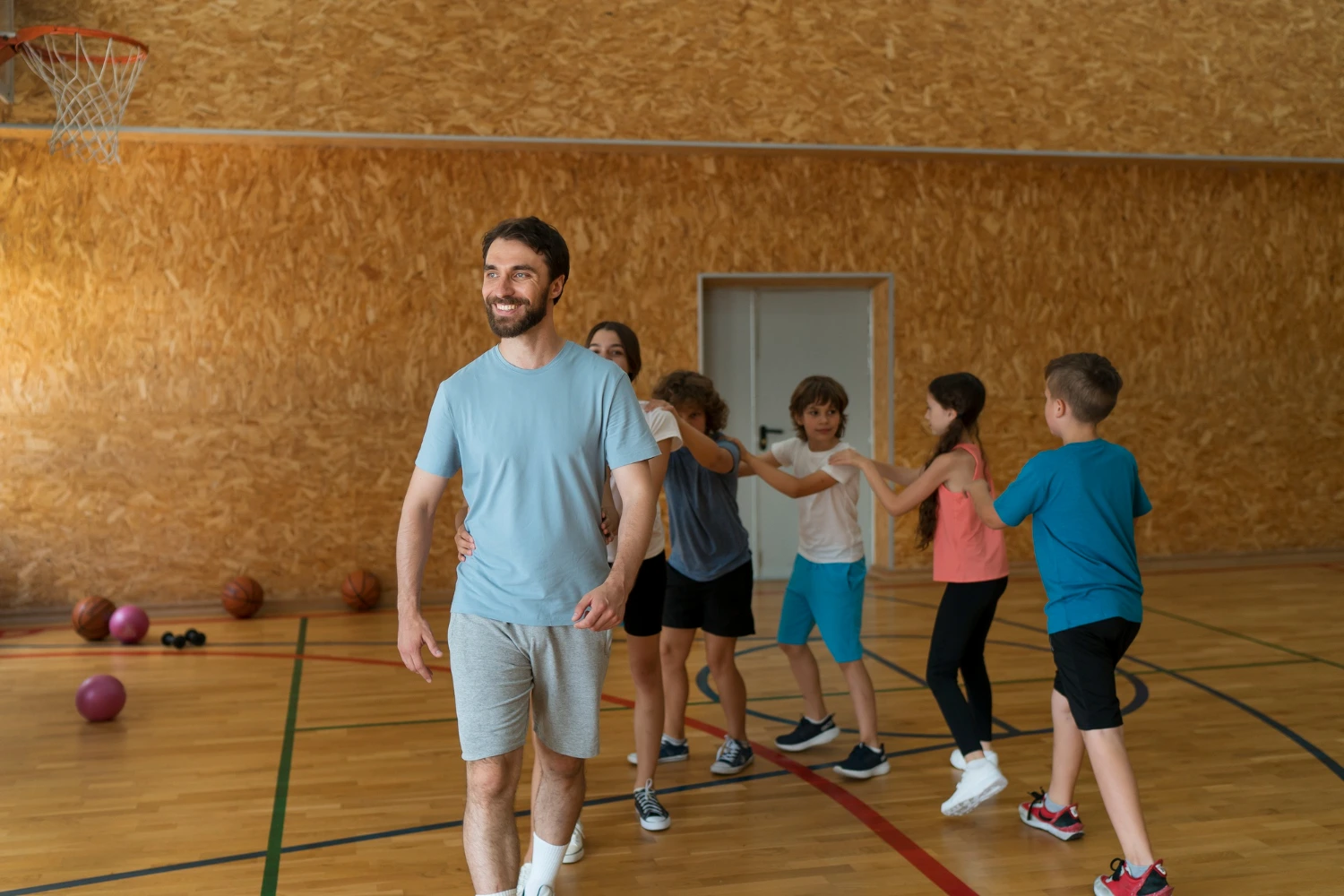
Choose Your Category
Opening Doors to Inclusive Careers: Explore a Spectrum of Job Categories Tailored for Every Special Individual's Potential
Recent Job Listing
From Education to Technology, Healthcare to Creative Arts, Find Meaningful Opportunities.

Every Special Child
Every Special Child (ESC) is a growing organization connecting schools with professionals in the field of education. We are dedicated to delivering excellence with unwavering expectations for each student’s achievement and success. Our team of devoted professionals wholeheartedly ensures the highest quality of services, fostering and upholding strong relationships with schools and professionals.
Each member of our team is thoroughly qualified, certified, and possesses extensive experience, collaborating closely with schools and qualified/certified school professionals.
Our Testimonials
Blogs & News

How to Become a School Nurse: Education, Skills, and Jobs
How to Become a School Nurse: Education, Skills, and Jobs Become a School Nurse Ever thought about a career where you can combine healthcare expertise with the joy of helping children thrive? Becoming a school nurse might be exactly what you’re looking for. School nurses play an essential role in maintaining student health, ensuring schools are safe, and fostering healthy learning environments. Apply Now. This career path offers stability, emotional fulfilment, and a work-life balance that’s hard to find in traditional hospital settings. What Does a School Nurse Do? Key Responsibilities and Duties Become a School Nurse aren’t just there for scraped knees—they’re the backbone of a school’s health system. Their responsibilities include: Conducting health screenings and managing chronic conditions Administering medication and first aid Coordinating immunizations Developing health plans for students with special needs Educating students on nutrition, hygiene, and wellness A School Nurse’s Day in the Life A typical day might include handling emergencies, documenting student visits, communicating with parents, and collaborating with teachers. Every day is different, making the job dynamic and meaningful. Read More Articles. The Impact of School Nurses on Student Health From managing asthma to spotting early signs of illness, Become a School Nurse are often the first line of defence in promoting long-term student well-being. Educational Requirements for Become a School Nurse Step 1: Earn a Nursing Degree Obtaining a Bachelor of Science in Nursing (BSN) is the first stage. Some states accept an Associate Degree in Nursing (ADN), but a BSN is preferred for specialised school nurse roles. Step 2: Obtain Your RN Licence You must pass the NCLEX-RN (National Council Licensure Examination for Registered Nurses) to become a registered nurse. Step 3: Gain Experience Before working in a school, gaining experience in paediatrics, community health, or public health helps build the foundation you’ll need. Step 4: Pursue School Nurse Certification Some states require a School Nurse Services Credential or similar certification. These programmes focus on child development, education law, and school health management. Recommended Degrees and Certifications BSN (Bachelor of Science in Nursing) – the most common path. MSN (Master’s in School Nursing or Public Health Nursing) – for leadership positions. National Certification (NBCSN) – demonstrates advanced competence in school health. Licensure and Certification Requirements State-by-State Variations Every state has its own rules. Some require a teaching credential, while others only require an RN licence. Importance of School Nurse Credential The School Nurse Credential ensures that nurses are trained in educational settings—bridging the gap between healthcare and education. Maintaining Certification Ongoing education, workshops, and renewal exams keep Become a School Nurse updated on best practices. Essential Skills for School Nurses Clinical Skills Handling medical emergencies, administering medications, and managing chronic illnesses are core tasks. Communication and Empathy You’ll often be the bridge between students, parents, and teachers—so communication is key. Crisis Management and Decision-Making From allergic reactions to mental health crises, quick and confident decisions can make a huge difference. Soft Skills That Make a Difference Patience and compassion when working with children Organization to manage large caseloads Collaboration with school staff and families Career Path and Advancement Opportunities Start as a school nurse and move into roles like: Lead School Nurse Health Services Coordinator Public Health Nurse School Nurse Administrator With additional education, you could even teach future Become a School Nurse or move into district-level health management. See More Salary and Job Outlook Become a School Nurse earn an average salary between $55,000 and $80,000 annually, depending on location and experience. With increasing focus on student mental health and wellness, the demand for Become a School Nurse is on the rise—especially in public school systems. Work Environment and Schedule Most Become a School Nurse work in elementary, middle, or high schools, enjoying regular school hours and holidays off. It’s ideal for nurses seeking balance between career and personal life. However, managing hundreds of students can be challenging—requiring patience and resilience. Steps to Land Your First School Nurse Job Craft a compelling resume highlighting paediatric or public health experience. Write a tailored cover letter emphasising your passion for children’s health. Network with educators and health administrators. Search job boards like Indeed, SchoolSpring, and district websites. Prepare for interviews by practising scenario-based questions. Top Employers for School Nurses Public and private schools School districts and local education boards Government health departments Private healthcare contractors providing school health services Benefits of Being a School Nurse Emotional fulfilment: You make a difference every day. Work-life balance: Regular hours and school vacations. Job stability: Consistent demand across the U.S. Professional growth: Opportunities to advance or specialise. Challenges and How to Overcome Them Managing Large Caseloads Many schools have only one nurse for hundreds of students. Prioritising and time management are key. Limited Resources Sometimes, budgets are tight. Creative problem-solving and partnerships with local clinics can help. Staying Updated Health policies and diseases evolve—continuing education is essential to stay effective. FAQs How long does it take to become a school nurse? Typically, 4–6 years, including your BSN and RN licensing. Do school nurses need a master’s degree? Not always. However, an MSN can open leadership or administrative roles. What’s the difference between a school nurse and a paediatric nurse? Become a School Nurse work in educational settings, focusing on preventive care, while paediatric nurses often work in hospitals. Can I become a school nurse without experience? Some districts hire new graduates, but experience in paediatric or public health nursing gives you an edge. Are Become a School Nurse in high demand? Yes! With growing emphasis on student wellness and mental health, Become a School Nurse are increasingly needed across the U.S.
Published on Nov 25, 2025

Why School Nurses Are in High Demand: Jobs and Career Paths
Why School Nurses Are in High Demand Jobs and Career Paths School Nurses Are in High Demand Jobs have become vital pillars in the education system. They’re not just healthcare providers—they’re protectors of students’ overall well-being. With schools facing more health challenges than ever before, the demand for qualified school nurses is skyrocketing. But what exactly makes this role so essential today. Apply Now. Understanding the Role of a School Nurse What Does a School Nurse Do Daily? A School Nurses Are in High Demand Jobs day can range from treating playground injuries to managing complex medical conditions. They ensure every student is healthy enough to learn, supporting both physical and emotional health. Key Responsibilities and Duties Providing first aid and emergency care Administering medications Monitoring chronic illnesses like asthma, diabetes, and epilepsy Conducting health screenings and immunization checks Educating students on hygiene, nutrition, and wellness Difference Between School Nurses and Clinical Nurses While clinical nurses focus on patients in hospitals, school nurses handle diverse health needs in an educational setting. Their approach is more preventive and community-based. See More Why School Nurses Are in High Demand Rising Health Concerns Among Students Modern students face increasing health issues — from obesity to asthma — creating a need for professional medical care during school hours. Mental Health Support in Schools With rising anxiety, depression, and stress among students, School Nurses Are in High Demand Jobs often serve as the first line of support, identifying warning signs and connecting students with counselors. Increase in Chronic Illnesses and Allergies More children are living with chronic conditions like diabetes, food allergies, or ADHD. Nurses ensure these students stay safe and supported at school. Post-Pandemic Health Priorities COVID-19 reshaped how schools view health safety. The pandemic highlighted the importance of having trained medical professionals on-site to manage infectious diseases and health policies. Role in Managing Emergencies and Health Education From CPR to flu prevention, School Nurses Are in High Demand Jobs are trained to respond quickly and educate students and staff on maintaining healthy environments. Read More Articles. The Educational Path to Becoming a School Nurse Minimum Qualifications Required Most School Nurses Are in High Demand Jobs Are in High Demand Jobs are licensed Registered Nurses (RNs) with clinical experience. It is frequently preferred to have a Bachelor of Science in Nursing (BSN). RN vs BSN for School Nursing While RNs can qualify, BSN-prepared nurses are more competitive and often earn higher salaries due to their advanced knowledge. Certification and Licensing Requirements Many states require certification through the National Board for Certification of School Nurses Are in High Demand Jobs (NBCSN) and an active RN licence. Skills and Qualities of an Effective School Nurse Communication and Empathy Strong interpersonal skills help nurses connect with students and parents, especially when handling sensitive health issues. Decision-Making and Crisis Management Quick thinking is crucial during emergencies — whether it’s a sudden asthma attack or an allergic reaction. Collaboration with Teachers, Parents, and Healthcare Providers School Nurses Are in High Demand Jobs Are in High Demand Jobs act as bridges between education and healthcare, ensuring seamless communication among all parties involved in a child’s well-being. Career Opportunities and Job Outlook Public and Private School Positions Most nurses work in public schools, but private and charter schools also offer rewarding positions. Opportunities in Special Education Settings Special education schools often hire nurses with experience in managing complex medical needs and behavioural challenges. Career Advancement Options School Nurses Are in High Demand Jobs Are in High Demand Jobs can advance into administrative roles, become District Nurse Coordinators, or transition into Public Health Nursing. Salary Expectations for School Nurses National Average Salary Overview As of recent data, School Nurses Are in High Demand Jobs in the U.S. earn between $55,000 and $80,000 annually, depending on location and experience. Factors Influencing Salary Education level (BSN vs RN) Years of experience Geographic region School district funding Comparison with Other Nursing Roles Although salaries may be lower than hospital positions, School Nurses Are in High Demand Jobs enjoy better work-life balance and less stress. Benefits of Working as a School Nurse Work-Life Balance and Predictable Schedules No night shifts or long hospital hours — School Nurses Are in High Demand Jobs Are in High Demand Jobs usually work during school hours with weekends and holidays off. Rewarding Relationships with Students They build long-term connections, often watching students grow healthier and more confident over time. Impact on Community Health By promoting healthy habits, School Nurses Are in High Demand Jobs play a key role in shaping healthier communities. Challenges Faced by School Nurses High Student-to-Nurse Ratios In many districts, one nurse serves multiple schools, creating challenges in providing personalised care. Limited Resources and Funding Some schools lack proper medical supplies or dedicated health rooms, stretching nurses thin. Managing Complex Health Issues Balancing chronic illnesses, emergencies, and mental health support can be overwhelming without sufficient support staff. Future of School Nursing Integration of Telehealth and Technology Digital tools allow nurses to monitor students’ health remotely and maintain accurate records efficiently. Growing Focus on Preventive Health Education Schools are emphasising preventive care — teaching hygiene, nutrition, and mental wellness early on. Policy and Advocacy for Better Ratios Organisations are pushing for improved nurse-to-student ratios to ensure safer learning environments. How to Find School Nurse Jobs Job Boards and Professional Associations Websites like SchoolSpring, Indeed, and NASN.org list openings for School Nurses Are in High Demand Jobs nationwide. Networking and Internships Connecting with local school districts or joining nursing associations can open job opportunities. Tips for Building a Strong Resume Highlight clinical experience, certifications, and strong communication skills to stand out in applications. FAQs What qualifications are needed to become a School Nurses Are in High Demand Jobs? You’ll need an RN licence, and most schools prefer a BSN degree. Some states also require certification from the NBCSN. How much does a school nurse typically earn? On average, school nurses earn between $55,000 and $80,000 annually, depending on experience and location. Can registered nurses (RNs) work as school nurses? Yes, RNs can work as school nurses, though a BSN may improve career prospects. What is the biggest challenge for school nurses today? High student-to-nurse ratios and limited funding are among the top challenges. Are there online programmes for school nurse certification? Yes, several accredited universities offer online certification and continuing education programmes for school nurses.
Published on Nov 25, 2025

Career Growth for BSN Nurses: Paths Beyond Bedside Care
Career Growth for BSN Nurses: Paths Beyond Bedside Care Career Growth for BSN Nurses is more than just bedside care—it’s a dynamic and evolving profession with endless opportunities. For nurses holding a Bachelor of Science in Nursing (BSN), the doors to diverse and impactful career paths are wide open. Whether you’re drawn to education, leadership, technology, or public health, your BSN degree can be a launchpad to a fulfilling career beyond the traditional hospital setting. Apply Now. The Value of a BSN Degree The Career Growth for BSN Nurses degree isn’t just a credential—it’s a symbol of commitment to professional growth and excellence in patient care. Hospitals and healthcare organizations increasingly prefer or require BSN-prepared nurses due to their strong foundation in leadership, research, and critical thinking. Read More Articles. According to studies, BSN nurses often earn higher salaries, have more leadership opportunities, and enjoy greater career mobility than those with associate degrees. The degree equips nurses not only to provide top-quality care but also to innovate, manage, and educate. Why Nurses Are Exploring Careers Beyond Bedside Many Career Growth for BSN Nurses love bedside care but seek new challenges or more sustainable work environments. Factors such as long shifts, emotional burnout, and physical strain push some nurses to explore alternative career paths. Others simply want to lead, teach, or influence healthcare systems on a broader scale. See More In today’s healthcare landscape, the role of nurses extends beyond hospitals—they are educators, policymakers, researchers, and innovators shaping the future of healthcare. Career Paths Beyond Bedside Care Nursing Administration and Leadership Career Growth for BSN Nurses-prepared nurses are well-suited for administrative and leadership positions such as: Nurse Manager Director of Nursing Chief Nursing Officer (CNO) These roles involve overseeing departments, managing budgets, and guiding nursing teams to deliver exceptional care. Leadership roles often require additional certifications, such as Nurse Executive (NE-BC) or Certified Nurse Manager and Leader (CNML). Average Salary: $90,000–$150,000+ per year, depending on experience and location. Nurse Educator and Academic Careers If you have a passion for teaching, becoming a Nurse Educator is a rewarding choice. Educators train future nurses in colleges, universities, and clinical settings. With the growing demand for nursing faculty, BSN nurses who pursue a Master’s in Nursing Education can easily transition into this field. Beyond teaching, educators mentor students, design curriculum, and promote lifelong learning in nursing. This path is perfect for nurses who want to inspire the next generation rather than provide direct patient care. Research Nursing Do you love exploring new treatments, improving outcomes, and advancing healthcare science? Then research nursing might be your calling. Research nurses work with clinical trials, academic institutions, and pharmaceutical companies to test new procedures or medications. With a BSN, you can start in clinical research roles and eventually move into principal investigator or project manager positions. An MSN or PhD can open even more advanced research opportunities. Public Health Nursing Public health nurses take care beyond individual patients to focus on entire communities. They promote wellness, prevent disease, and ensure healthcare equity. From vaccination drives to health education programs, their impact is far-reaching. Workplaces include: Health departments NGOs Schools and community centers This role is ideal for those passionate about social change and community well-being. Nursing Informatics In the digital age, nursing informatics blends healthcare and technology. Informatics nurses manage patient data, improve electronic health record (EHR) systems, and ensure technology enhances patient outcomes. To specialize, nurses can pursue certifications such as RN-BC in Informatics. This role suits those who enjoy problem-solving, data analysis, and working with technology-driven healthcare systems. Case Management Case managers coordinate patient care between departments and ensure smooth transitions from hospital to home. They advocate for patients, manage costs, and collaborate with insurance providers. This career is ideal for nurses who are organized, empathetic, and love coordination rather than direct care. Common Employers: Hospitals, rehabilitation centers, insurance companies, and home care agencies. Healthcare Policy and Advocacy Nurses have firsthand experience with healthcare challenges—making them powerful advocates for change. Career Growth for BSN Nurses can work with policymakers, government agencies, or non-profits to shape healthcare laws and initiatives. Roles include: Policy Analyst Legislative Consultant Health Program Director By influencing healthcare policies, nurses ensure patient voices are heard at the highest levels. Entrepreneurial Opportunities for BSN Nurses Believe it or not, nurses make great entrepreneurs! With a Career Growth for BSN Nurses, you can start your own consulting business, wellness clinic, or educational platform. Many nurses also become freelance health writers, legal nurse consultants, or telehealth providers. If you have a unique idea and the drive to make it happen, nursing entrepreneurship can give you both financial independence and creative freedom. Advanced Degrees and Certifications A Career Growth for BSN Nurses is just the beginning. To advance further, consider pursuing: MSN (Master of Science in Nursing) – for educators, nurse practitioners, or administrators. DNP (Doctor of Nursing Practice) – for leadership and clinical expertise. PhD in Nursing – for research and academia. Additionally, specialized certifications in critical care, informatics, or leadership enhance your credibility and open higher-paying opportunities. Networking and Professional Development Your network is your net worth. Joining professional organizations such as the American Nurses Association (ANA) or Sigma Theta Tau International can help you connect with mentors, stay updated on trends, and discover new job opportunities. Attending conferences, joining LinkedIn groups, and pursuing continuous education are key strategies for career growth beyond bedside care. FAQs What is the best non-bedside job for Career Growth for BSN Nurses? Nursing informatics, education, and administration are among the most popular and high-paying non-bedside options. Do I need a master’s degree to move beyond bedside nursing? Not always. While advanced degrees open more doors, many administrative and non-clinical roles accept experienced BSN nurses with relevant certifications. Can BSN nurses work in research without a PhD? Yes! Many BSN nurses work as research coordinators or assistants before advancing to higher research positions. How can I transition from bedside to leadership roles? Start by taking leadership courses, obtaining certifications, and volunteering for managerial responsibilities within your current organisation. What’s the future outlook for BSN nurses? Excellent! With the shift toward preventive and community-based care, BSN nurses will continue to see growing demand in both clinical and non-clinical settings.
Published on Nov 25, 2025

























